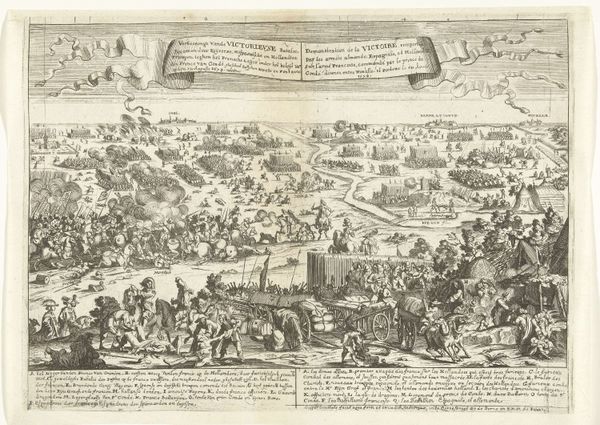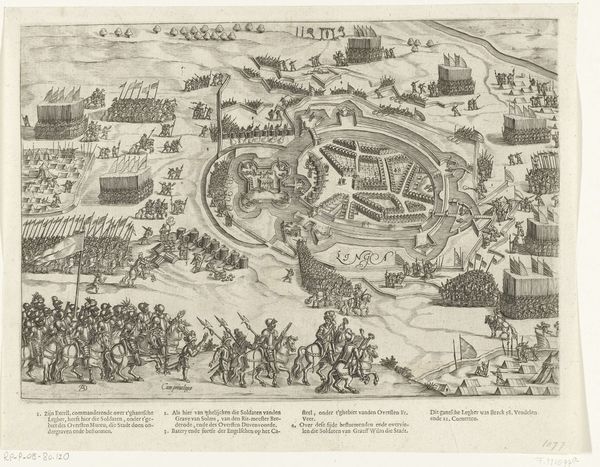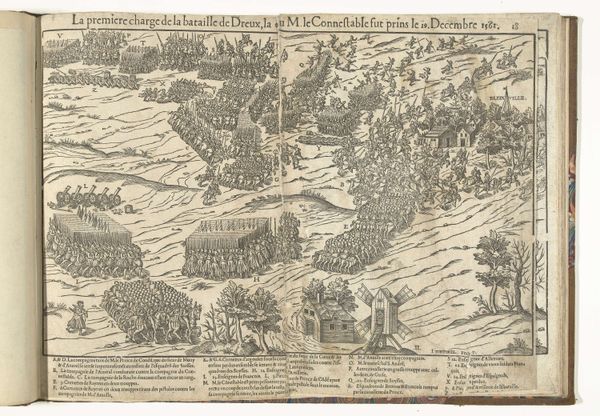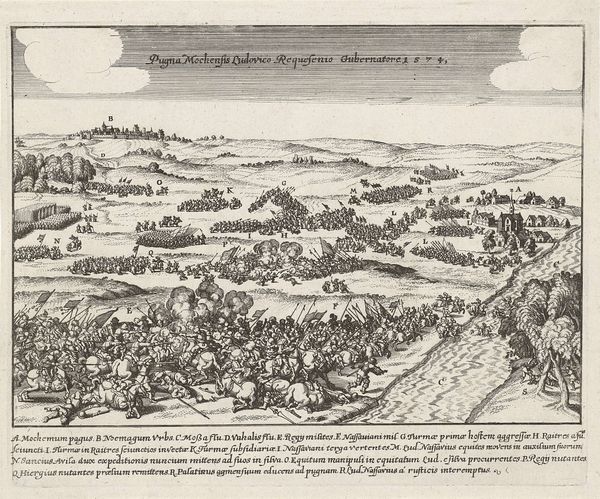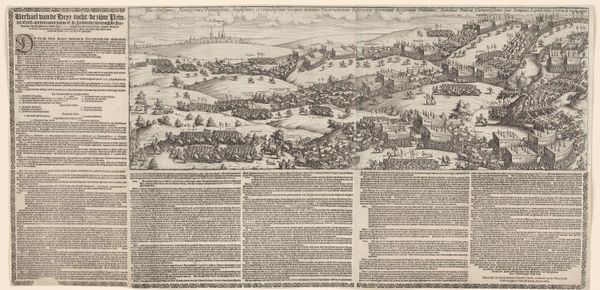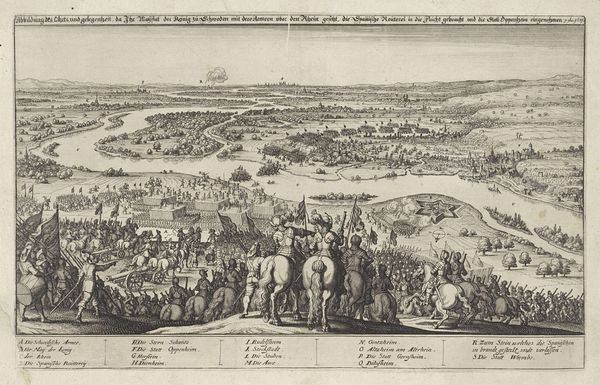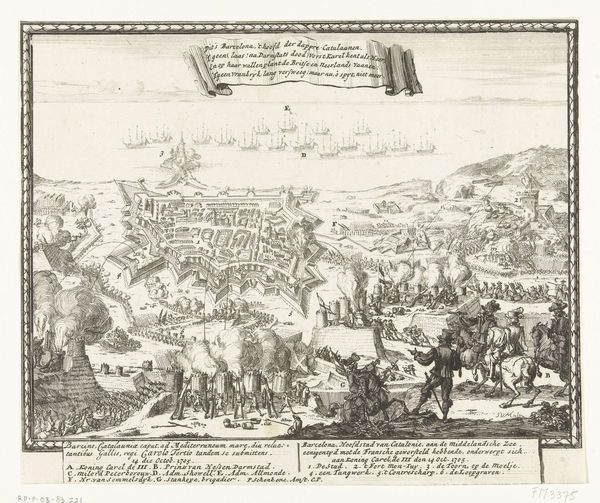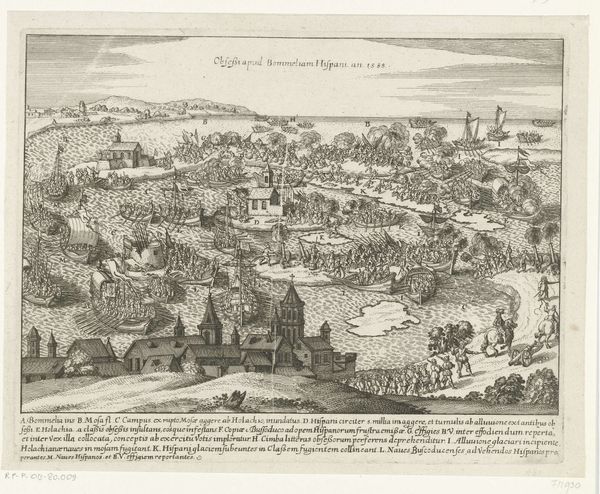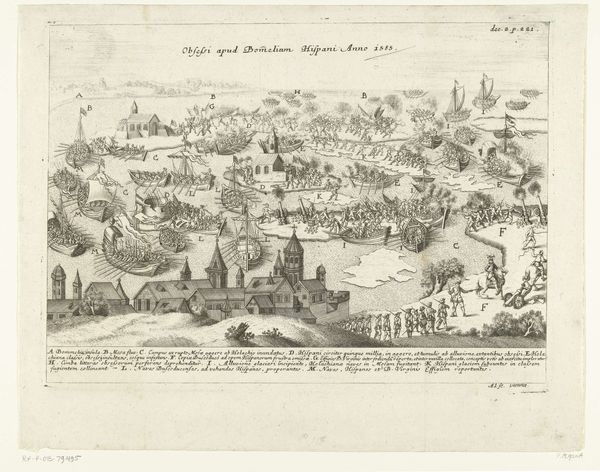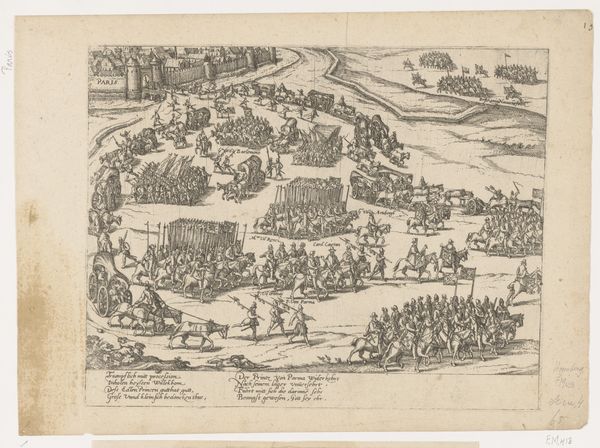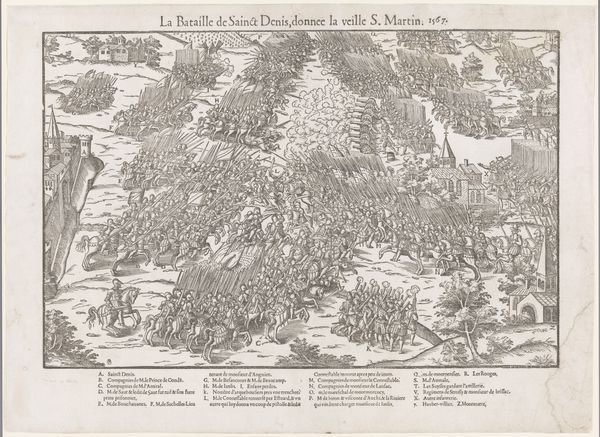
print, engraving
#
baroque
# print
#
old engraving style
#
landscape
#
figuration
#
history-painting
#
engraving
Dimensions: height 430 mm, width 582 mm
Copyright: Rijks Museum: Open Domain
Curator: My first impression is that of organized chaos. A bird's-eye perspective offering a detailed depiction of a very disorderly event. Editor: Indeed. Here we have "Battle of Nördlingen, 1634", an engraving created by Balthasar Florisz. van Berckenrode circa 1634 to 1636, now held at the Rijksmuseum. It represents a significant clash during the Thirty Years' War. Curator: The meticulous lines and detailed rendering, typical of engravings, grant this battle a somewhat detached aesthetic. One can almost lose sight of the very real human suffering beneath. Editor: The visual strategy here is fascinating. The high vantage point allows for a comprehensive overview of the battlefield, presenting it almost as a map. This lends an air of objectivity, or even…strategic documentation, you might say. Yet it inevitably omits the intimate realities of conflict. The soldiers, reduced to mere markings on the landscape. Curator: Precisely. Consider how the compositional structure guides the viewer's eye: the clear foreground, the unfolding middle ground filled with troops and tactical arrangements, the receding background fading into the horizon, yet densely populated. Semiotically, it’s a layered visual argument. Editor: Looking at this engraving, one immediately reflects upon the socio-political implications of illustrating war in this fashion. It’s devoid of baroque drama or romantic heroism, portraying the conflict instead as an almost mathematical exercise in deployment and force. Consider its potential reception: would this reinforce support for the war effort by showcasing tactical prowess, or expose its grim reality? Curator: The uniformity and repetitiveness within the marks are important. Row upon row of troops represented with similar visual weight—the horror is muted by standardization. Editor: But does that not also highlight a key tension within depictions of war, the need to balance an accurate portrayal of large-scale conflicts with the acknowledgement of individual experiences of suffering? What narratives get lost in the comprehensive overview? Curator: Agreed. This work, as a symbolic construction, has as much to tell us about historical ways of seeing as about the actual battle itself. It speaks to an impulse towards a rationalized, perhaps even sanitized, view of conflict. Editor: Ultimately, analyzing van Berckenrode's print provides invaluable insight into not only a historical battle but also into how war itself was perceived and disseminated to a wider audience through imagery. Curator: It invites reflection upon the mediation between representation, reality, and remembrance. Editor: Yes, a reminder that history, like art, is never truly impartial.
Comments
No comments
Be the first to comment and join the conversation on the ultimate creative platform.


